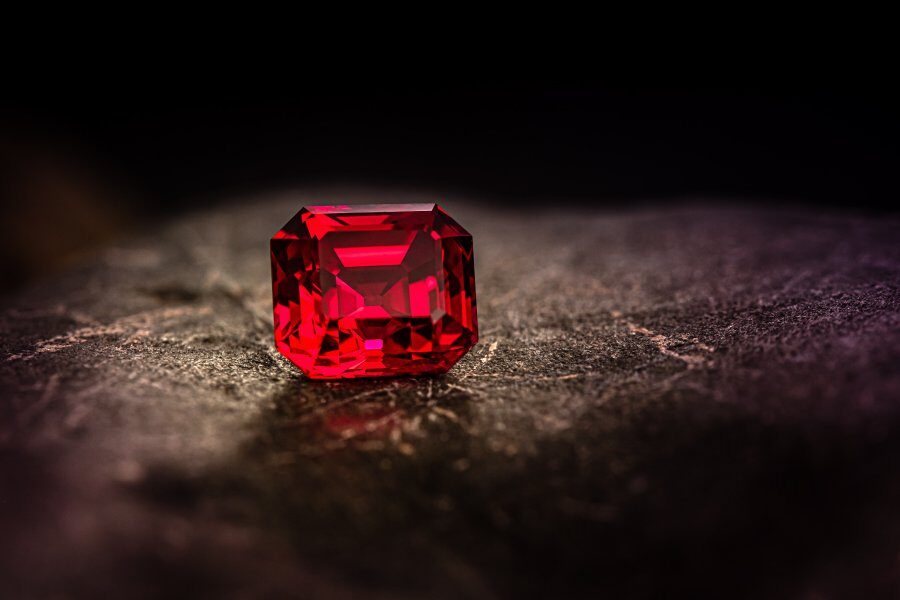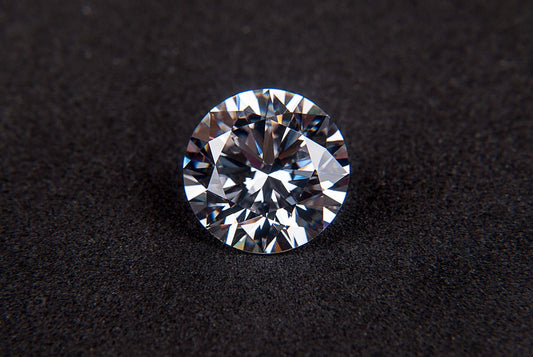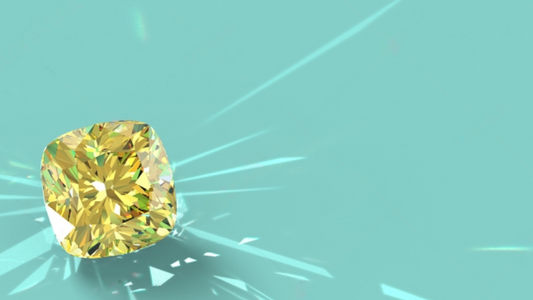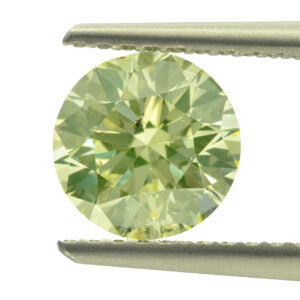Among all coloured gemstones, ruby gemstones or ruby gems command the highest prices. Many times, fine-quality rubies have broken auction records for their per-carat prices. A slight colour difference can have a significant effect on the value of better-quality materials. Rubies with top colours and no eye-visible inclusions command higher prices. When the size of a ruby increases, the price rises.
The price-per-carat of rubies can make them the most valuable coloured gemstones. Ruby can be difficult to tell if it is natural since there are a lot of fakes out there. In the end, a licensed jeweller is the best person to tell. What does a real ruby look like? Let's examine the characteristics and quality of real rubies in this article!

The Nature Of Ruby And Synthetic Ruby
It is natural rubies, as their name implies that are genuine stones that humans have not modified. The formation of these rubies takes millions of years. It requires a lot of care to extract the metal once it is ready for mining.
In addition to sapphires, corundum is also the element that produces rubies. Is there a reason why these gems are red and not blue? It depends on how much chromium is present during the formation process that causes the colour change. Your ruby's colour will be more vibrant if there is more chromium.
Since natural rubies take a long time to form and the extraction process is fragile, it's not surprising that they are worth more than synthetic and imitation or fake rubies.
Scientists create synthetic rubies in labs, and they may resemble natural gemstones. Since synthetic rubies share the same chemical and physical characteristics as natural rubies, they are still considered real. Rather than taking millions of years to form, they take months. Due to the faster process, these gems are more ethical, sustainable, and reasonably priced.
The same can be said about synthetic rubies since they do not have flaws or stains like natural rubies. For those on a tight budget, these rubies are an excellent choice.
A Ruby's Qualities
In the world of gemstones, rubies are among the most popular. A rare and high demand has made this metal valuable since ancient times. Rubies are not well understood in terms of their appearance. Many theories exist about why the gemstone is red, including that it is due to the iron content.
With the help of these qualities, we can understand what a ruby looks like!
Ruby's Colour
There is a range in the colour of red in the mix of untreated rubies and heat-treated rubies. There is no doubt that colour has the most significant influence on the value of a ruby. There is a rich red colour in the finest rubies, ranging from a deeper red to a slightly purplish red.
Ruby with overtones of orange and purple is less valued in most markets than ruby with pure red tones. For a product to be considered of the finest quality, the colour must not be too dark or too light. It is detrimental to the stone's brightness if the colour is too dark. However, if a ruby stone's colour is too light, it might be deemed as pink sapphire, no matter how intense the colour is. However, pink sapphires are much more affordable than rubies and are, therefore, more popular. Ruby colours are ultimately determined by how you feel about them.

Clarity Of Ruby
During the intersection of needles of the mineral rutile, ruby inclusions called silk are formed. The intact crystals prove that the ruby was not subjected to high temperatures during heat treatment. The possibility of heat treatment at a lower temperature still exists.
Trade professionals expect rubies to contain inclusions at least in some proportions since inclusion-free rubies are virtually unheard of. Depending on how noticeable the inclusions are, rubies can have different values. The value of a ruby drops dramatically when it contains noticeable inclusions or inclusions that reduce its transparency and brightness. The brilliance, transparency, and value of the stone are greatly diminished if there are significant and prominent inclusions under the table facet. It is also possible for inclusions to limit the durability of a ruby.
There is a risk of durability threats associated with fractures that extend beyond the surface. Mineral inclusions called needles are typical ruby clarity characteristics. Minerals containing needles in intersecting groups are called silks when they are rutile. In some cases, needles may be short, while in others, they may be long and slender. Inclusions that resemble fingerprints may also be present in rubies, such as needles made up of other minerals needles, tiny crystals, colour variations, or inclusions composed of other minerals.
Included gems can enhance their appearance with specific inclusions. Light scatters across facets that might otherwise be too dark due to the presence of rutile silk. The ruby's crown is more evenly coloured. As a result, they add softness to the colour. Stones cut with curved upper surfaces, such as cabochons, can also produce the star ruby effect, called asterism.
Cut Of A Ruby
A ruby's most common shape is oval or cushion-shaped. Ruby cuts and proportions are affected by several factors. Specific cuts are suited to rubies based on their crystal shape.
In some sources, ruby crystals can be elongated, but most are flat tabular hexagonal shapes. Shaped rubies usually have oval or cushion shapes, crowned with triangular and kite-shaped facets and pavilions of stepped facets arranged in concentric rows. There are also rubies in the shape of rounds, triangles, emeralds, pearls, and marquises.
The larger and higher-quality versions of these shapes are rare. Due to the high price of ruby rough, many cutters strive to conserve weight as much as possible. While light escapes from flattened pavilions, creating an unattractive see-through area in the stone called a window, they might fashion flattened ruby rough into shallow stones.
Another factor affecting the cut is pleochroism, which results in different colours in different directions of the crystal. When viewed from one crystal direction, ruby appears red to purplish red, while from the other direction, it appears orange. By orienting the table facet perpendicular to the long crystal direction, cutters can minimise the orange-red colour. Nevertheless, it is not always possible to orient a ruby for the best colour return due to the risk of losing too much weight.
Size And Weight Of A Ruby
A ruby over one carat of acceptable quality is extremely rare, whereas commercial-quality rubies are widely available. Rubies become more expensive per carat as they become more prominent.
Conclusion
Whether you're buying a natural ruby, synthetic ruby, or imitation ruby is essential to know before buying. These categories each have their pros and cons, but some unscrupulous retailers are known to sell cheaper rubies as the real thing.
Hopefully, these characteristics will help you imagine what a natural ruby looks like! Let us know what you think in the comments!

ruby
FAQs
What is the best way to identify a raw ruby?
For a variety of reasons, raw and uncut rubies are much easier to determine whether they are real or not. It is common for rubies to grow in flat, hexagonal shapes. Ruby is very likely to be a genuine ruby if it exhibits this natural growth characteristic, along with parts of its host rock still attached (marble or alkali basalt).
Is a ruby just a red sapphire?
Although rubies are identical in every way except colour to sapphires, rubies have always stood out as a ruby gemstones throughout history, whether in movies or in real life. There is no such thing as sapphires in these stones.
Is it appropriate to wear rubies on which fingers?
According to astrology, the ruby ring should be worn on the right hand's ring finger. When buying a ruby gem, make sure the source is trustworthy and certified.
When it comes to engagement rings, are rubies good or bad?
Among gemstones, rubies are known for their vivid colours and durability. However, they are harder than other precious gemstones like emeralds, even though diamonds are harder. A Ruby engagement ring is, therefore a good choice for both engagement rings and anniversary rings.









